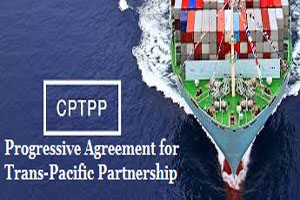
Revised TPP deal known as CPTPP finally makes it across the finish line
YarnsandFibers News Bureau 2018-01-24 17:00:00 – SydneyThe revived Trans-Pacific Partnership trade agreement now known as the Comprehensive and Progressive Agreement for Trans-Pacific Partnership (CPTPP) has finally made it across the finish line. The 11 remaining countries from the initial Trans-Pacific Partnership agreement finally agreed to go ahead with a new deal without the US.
The deal reduces the scope for controversial investor-state dispute settlements, where foreign investors can bypass national courts and sue governments for compensation for harming their investments. It introduces stronger safeguards to protect governments’ right to regulate in the public interest and prevent unwarranted claims.
The new agreement is considerable win for Australian farmers and service providers, in a trading area worth about A$90 billion (US$72 billion).
The new agreement is more of an umbrella framework for separate yet coordinated bilateral deals. According to Australian Trade Minister Steven Ciobo, the agreement will deliver 18 new free-trade agreements between the CPTPP parties. For Australia that means new trade agreements with Canada and Mexico and greater market access to Japan, Chile, Singapore, Malaysia, Vietnam and Brunei.
It means a speedier process for reducing import barriers on key Australian products which includes absorbent cotton. It also promises less competition for Australian services exports, encouraging other governments to look to use Australian services and reducing the regulations of state-owned enterprises.
Australia now also has new bilateral trade deals with Canada and Mexico as part and parcel of the new agreement. This could be worth a lot to the Australian economy if it were to fill commercial gaps created by potential trade battles within North America and between the US and China.
The new CPTPP rose from the ashes of the old agreement because of the inclusion of a list of 20 suspended provisions on matters that were of interest for the US. These would be revived in the event of a US comeback.
These suspended provisions involved substantial changes in such areas as investment, public procurement, intellectual-property rights and transparency. With the freezing of further copyright restrictions and the provisions on investor-state dispute settlements, these suspensions appear to rebalance the agreement in favor of Australian governments and consumers.
In fact, the scope of investor-state dispute settlements are narrower in the CPTPP, because foreign private companies who enter an investment contract with the Australian government will not be able to use it if there is a dispute about that contract. The broader safeguards in the agreement make sure that the Australian government cannot be sued for measures related to public education, health and other social services.
The one part of the agreement relating to temporary entry for businesspeople is rather limited in scope and does not have the potential to affect low-skilled or struggling categories of Australian workers. In fact, it only commits Australia to providing temporary entry (from three months, up to two years) of only five generic categories of CPTPP workers. These include such occupations as installers and servicers, intra-corporate transferees, independent executives, and contractual service suppliers.
Bits of the original agreement are still included in the CPTPP, such as tariffs schedules that slash custom duties on 95% of trade in goods. But this was the easy part of the deal.
The new agreement will be formally signed in Chile on March 8, and will enter force as soon as at least six members ratify it. This will probably happen later this year or in early 2019.
Market Intelligence
Ask for free sample Report

experience
Customer Base
dedicated team
Countries Served Worldwide









